Abstract
Influences of antibiotics on the fecal flora in children were studied for oral ampicillin, penicillin V, erythromycin, cefaclor, and gentamicin and for intravenous ampicillin, methicillin, cefpiramide, and ceftazidime. All antibiotics affected the normal flora, although the quality and quantity of the changes were variable. No substantial differences were noted between the oral and intravenous use of ampicillin with regard to its effect on the flora. Three penicillins, ampicillin, penicillin V, and methicillin, caused remarkable changes. The characteristic pattern observed was the considerable suppression of Bifidobacterium, Streptococcus, and Lactobacillus species. Although enterobacteria did not significantly change in number, Klebsiella spp. frequently replaced Escherichia coli. In patients given erythromycin and cefaclor, the reduction in the number of Bifidobacterium spp. was 1 log10 and that of members of the family Enterobacteriaceae was 3 log10. Gentamicin administered orally caused a drastic change, including a remarkable decline of E. coli to less than 2 log10/g of feces. Cefpiramide, a parenteral expanded-spectrum cephalosporin, suppressed normal flora so markedly that almost all species of organisms were eradicated, and the active growth of yeasts was promoted (2.6 log10 increase). Ceftazidime caused similar changes as cefpiramide, but the changes were less extensive. Yeasts increased after treatment with most antibiotic groups. This increase was particularly prominent in patients given oral penicillins and expanded-spectrum cephalosporins.
Full text
PDF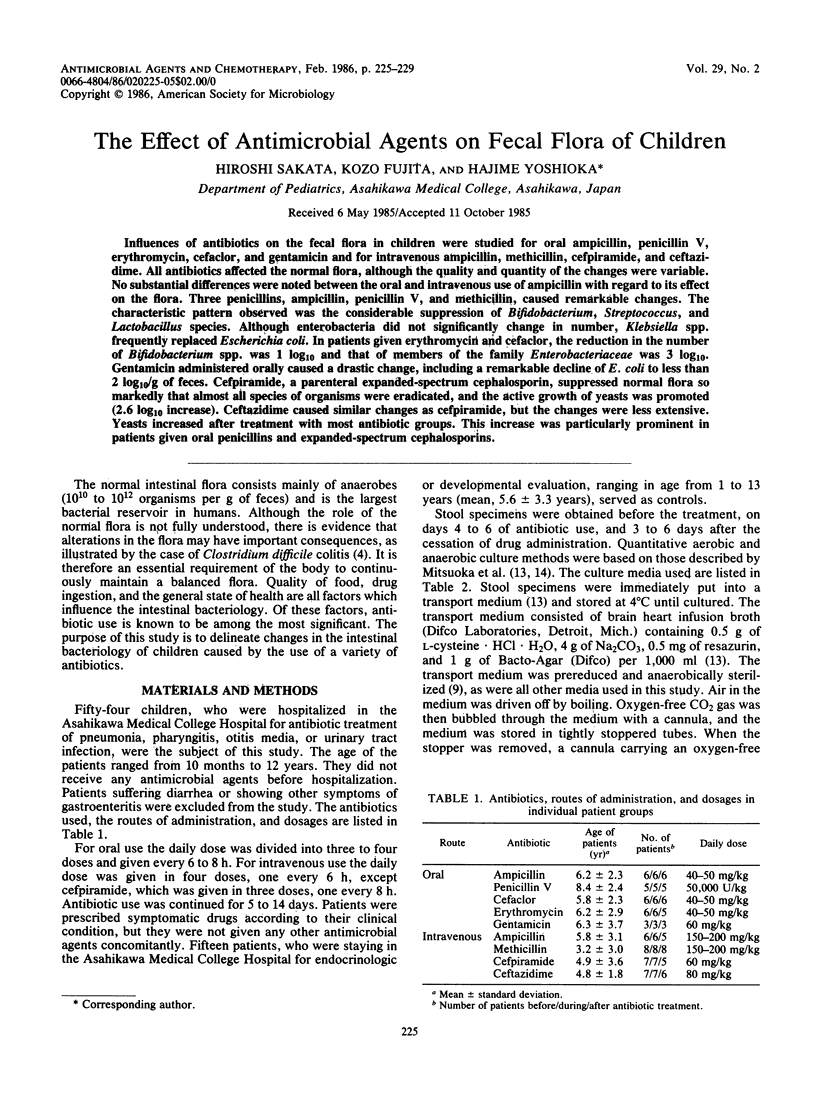
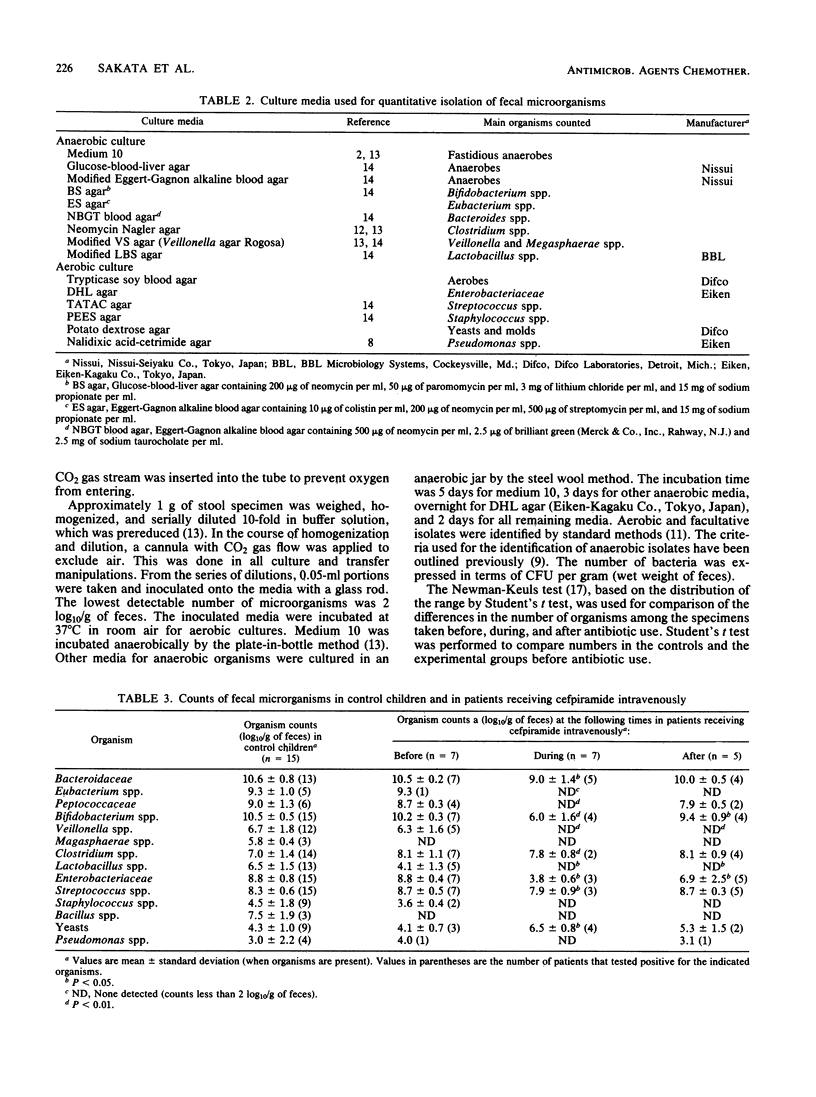
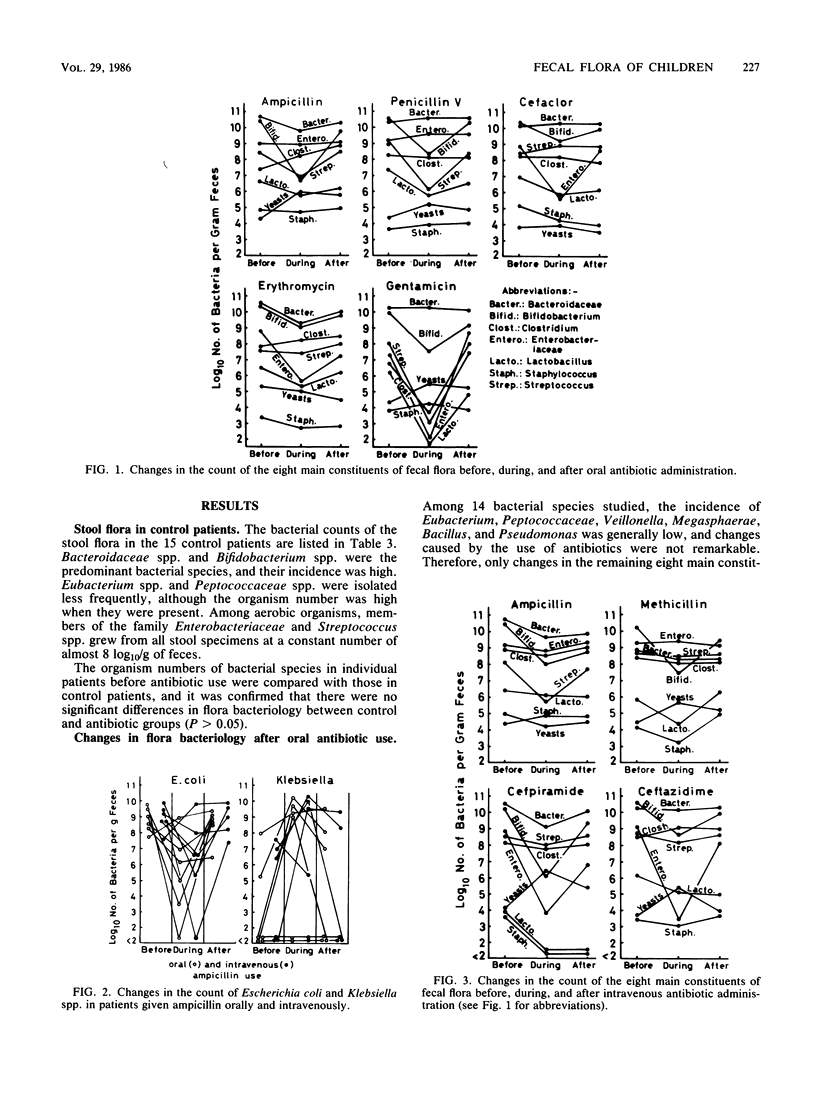
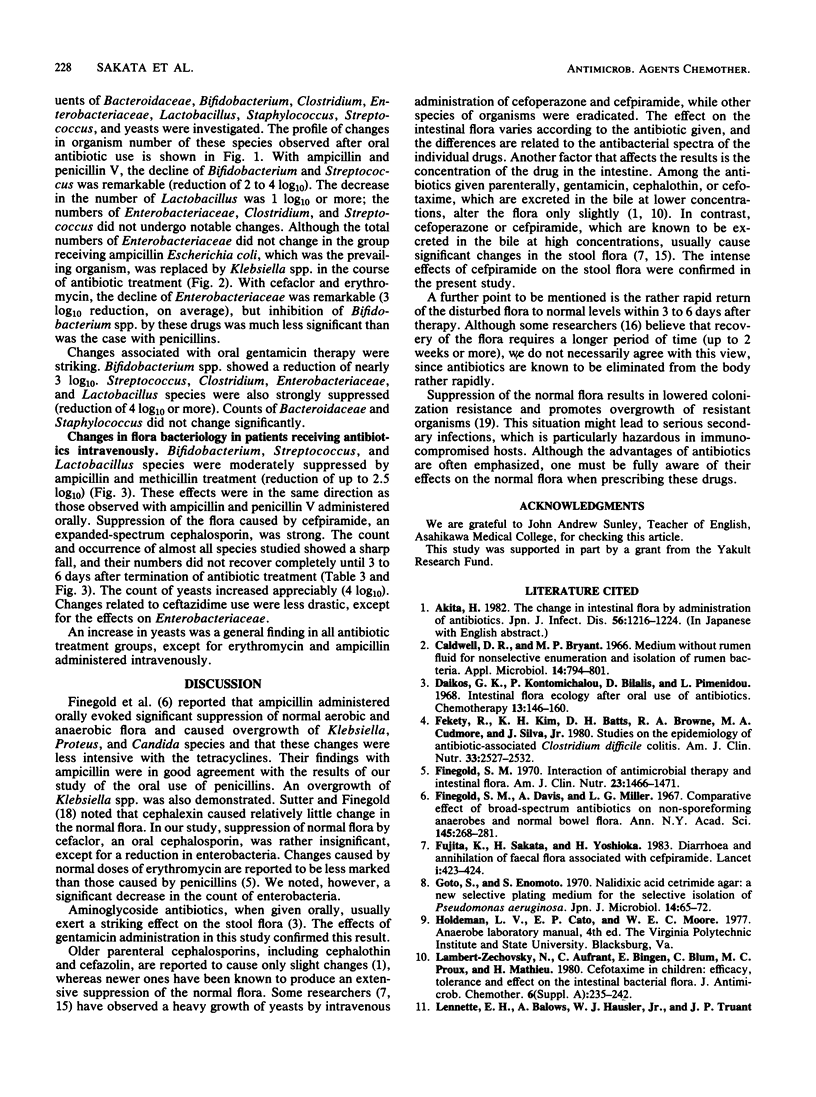
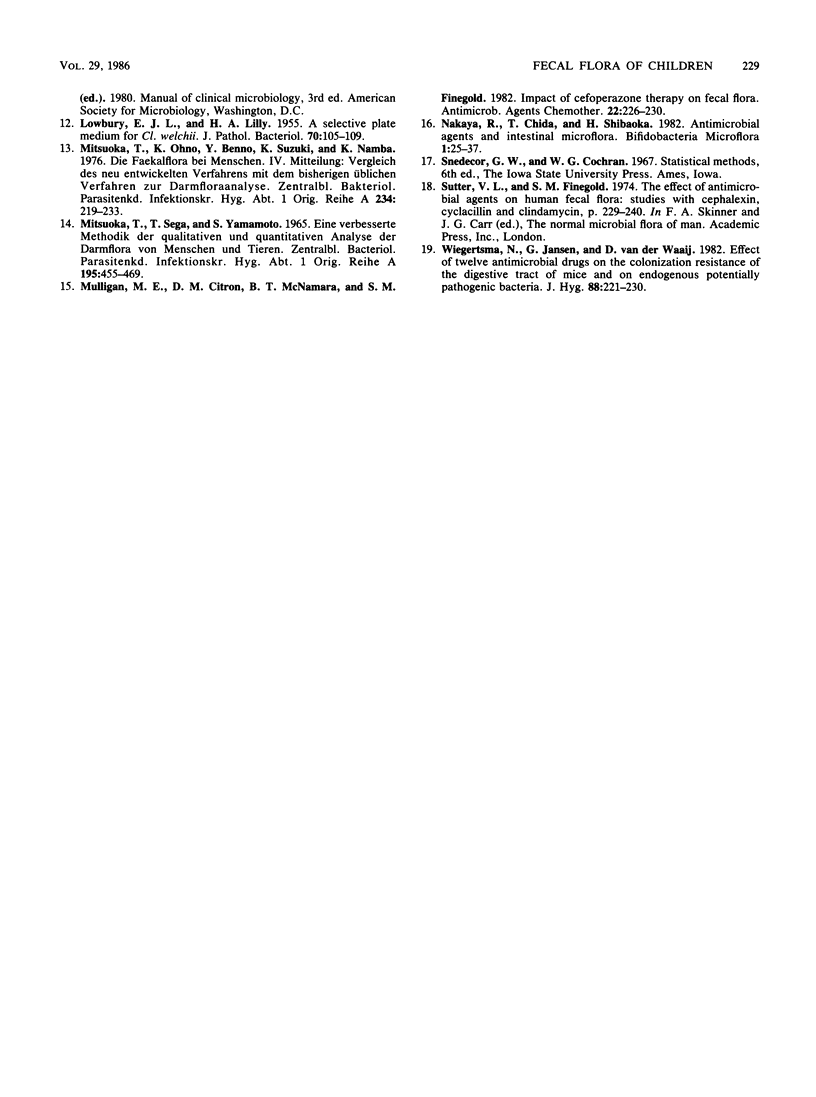
Selected References
These references are in PubMed. This may not be the complete list of references from this article.
- Akita H. [The change in intestinal flora by administration of antibiotics]. Kansenshogaku Zasshi. 1982 Dec;56(12):1216–1224. doi: 10.11150/kansenshogakuzasshi1970.56.1216. [DOI] [PubMed] [Google Scholar]
- Caldwell D. R., Bryant M. P. Medium without rumen fluid for nonselective enumeration and isolation of rumen bacteria. Appl Microbiol. 1966 Sep;14(5):794–801. doi: 10.1128/am.14.5.794-801.1966. [DOI] [PMC free article] [PubMed] [Google Scholar]
- Daikos G. K., Kontomichalou P., Bilalis D., Pimenidou L. Intestinal flora ecology after oral use of antibiotics: terramycin, chloramphenicol, ampicillin, neomycin, paromomycin, aminodidin. Chemotherapy. 1968;13(3):146–160. doi: 10.1159/000220543. [DOI] [PubMed] [Google Scholar]
- Fekety R., Kim K. H., Batts D. H., Browne R. A., Cudmore M. A., Silva J., Jr, Toshniwal R., Wilson K. H. Studies on the epidemiology of antibiotic-associated Clostridium difficile colitis. Am J Clin Nutr. 1980 Nov;33(11 Suppl):2527–2532. doi: 10.1093/ajcn/33.11.2527. [DOI] [PubMed] [Google Scholar]
- Finegold S. M. Interaction of antimicrobial therapy and intestinal flora. Am J Clin Nutr. 1970 Nov;23(11):1466–1471. doi: 10.1093/ajcn/23.11.1466. [DOI] [PubMed] [Google Scholar]
- Fujita K., Sakata H., Yoshioka H. Diarrhoea and annihilation of faecal flora associated with cefpiramide. Lancet. 1983 Feb 19;1(8321):423–424. doi: 10.1016/s0140-6736(83)91545-3. [DOI] [PubMed] [Google Scholar]
- Goto S., Enomoto S. Nalidixic acid cetrimide agar. A new selective plating medium for the selective isolation of Pseudomonas aeruginosa. Jpn J Microbiol. 1970 Jan;14(1):65–72. doi: 10.1111/j.1348-0421.1970.tb00492.x. [DOI] [PubMed] [Google Scholar]
- LOWBURY E. J., LILLY H. A. A selective plate medium for Cl. welchii. J Pathol Bacteriol. 1955 Jul;70(1):105–109. doi: 10.1002/path.1700700110. [DOI] [PubMed] [Google Scholar]
- Lambert-Zechovsky N., Aufrant C., Bingen E., Blum C., Proux M. C., Mathieu H. Cefotaxime in children: efficacy, tolerance and effect on the intestinal bacterial flora. J Antimicrob Chemother. 1980 Sep;6 (Suppl A):235–242. doi: 10.1093/jac/6.suppl_a.235. [DOI] [PubMed] [Google Scholar]
- Mitsuoka T., Ohno K., Benno Y., Suzuki K., Namba K. Die Faekalflora bei Menschen. IV. Mitteilung: Vergleich des neu entwickelten Verfahrens mit dem bisherigen üblichen Verfahren zur Darmfloraanalyse. Zentralbl Bakteriol Orig A. 1976 Mar;234(2):219–233. [PubMed] [Google Scholar]
- Mitsuoka T., Sega T., Yamamoto S. Eine verbesserte Methodik der qualitativen und quantitativen Analyse der Darmflora von Menschen und Tieren. Zentralbl Bakteriol Orig. 1965 Mar;195(4):455–469. [PubMed] [Google Scholar]
- Mulligan M. E., Citron D. M., McNamara B. T., Finegold S. M. Impact of cefoperazone therapy on fecal flora. Antimicrob Agents Chemother. 1982 Aug;22(2):226–230. doi: 10.1128/aac.22.2.226. [DOI] [PMC free article] [PubMed] [Google Scholar]
- Sutter V. L., Finegold S. M. The effect of antimicrobial agents on human faecal flora: studies with cephalexin, cyclacillin and clindamycin. Soc Appl Bacteriol Symp Ser. 1974;3(0):229–240. [PubMed] [Google Scholar]
- Wiegersma N., Jansen G., van der Waaij D. Effect of twelve antimicrobial drugs on the colonization resistance of the digestive tract of mice and on endogenous potentially pathogenic bacteria. J Hyg (Lond) 1982 Apr;88(2):221–230. doi: 10.1017/s0022172400070091. [DOI] [PMC free article] [PubMed] [Google Scholar]


